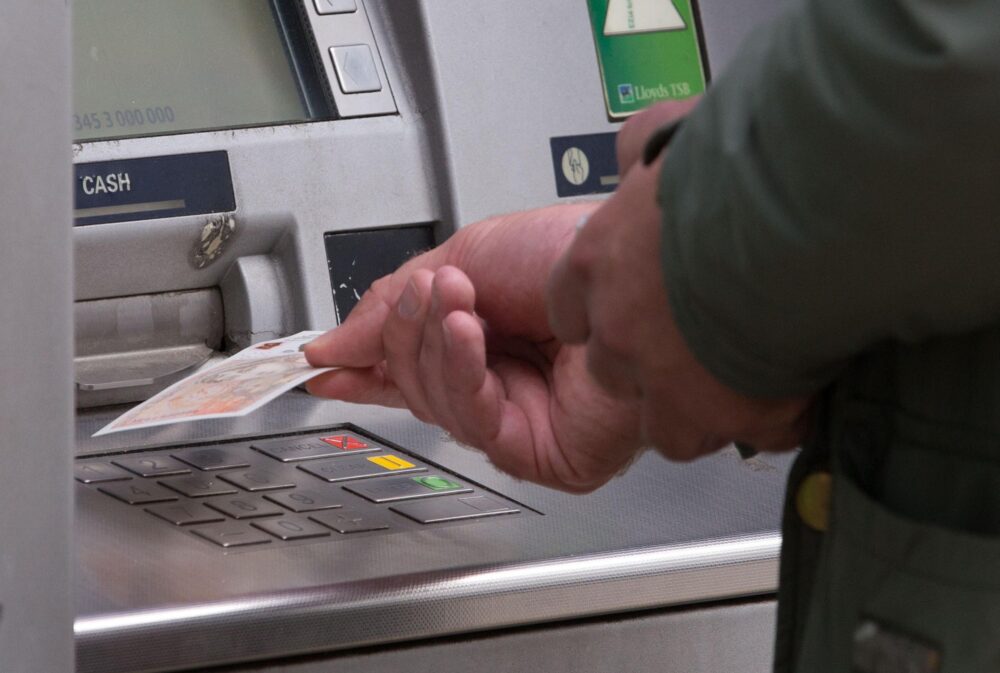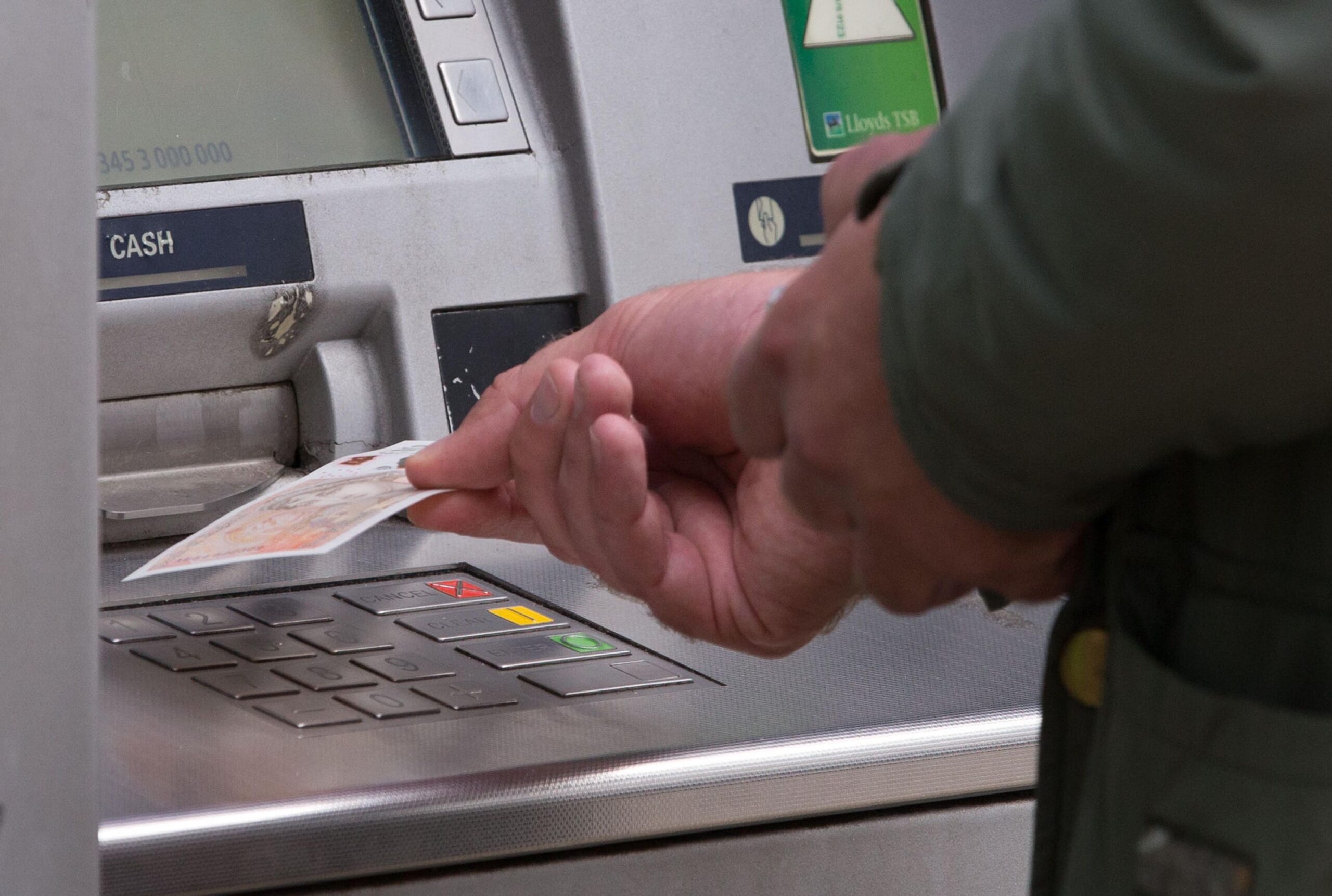The number of ATM transactions plunged by 43% during the “coronavirus year”, according to Link, the UK’s main cash machine network.
Link said the sharp drop-off in ATM withdrawals, compared with the previous 12 months, equates to £37 billion less in cash sitting in people’s pockets, purses and wallets.

As the anniversary of the first national lockdown approaches on March 23, Link released data showing how the nation’s cash habits underwent a dramatic shift during the coronavirus pandemic.
In early April 2020, as the first lockdown’s restrictions had an impact, ATM withdrawals shrank by as much as 68%. In some parts of the country, ATM use fell by more than 80%, Link said.
At the start of March 2020 there were 45,000 free-to-use and 15,000 charging machines – and a year later there are 41,000 free-to-use machines and just over 12,100 charging ATMs.
Although people have been visiting ATMs less often, when they do go to the “hole in the wall” they have been tending to take more cash out typically.
This explains why withdrawals have fallen more sharply by volume than they have by value in total. The total value of cash withdrawn fall by 36%, which is lower than the 43% fall in the volume of withdrawals.
Last April, the typical amount being withdrawn jumped from just under £70 to more than £80.
It fell back to just under £80 during the summer of 2020, as coronavirus restrictions were eased, and has since climbed above £80 once more.
The immediate effect of lockdowns meant that many cash machines located in places forced to shut due to Covid 19 restrictions had to be switched off.
Around 3,000 machines located in shopping centres, airports, pubs, cinemas or convenience stores went offline, Link said.
And in places where there were multiple ATMs, such as bank branches or supermarkets, some machines which were next to each other were closed to support social distancing, it said.
As lockdown eases, Link said it expects some of these machines to come back online.
Weekly #ATM figures as we approach the anniversary of last year's lockdown pic.twitter.com/xw4JL68UBU
— LINK Scheme (@LINK_ATM_Scheme) March 8, 2021
Link has carried out consumer surveys to gain further insight into how people’s attitudes and habits concerning cash have changed.
It said that in the early weeks of March 2020, only around 13% of people said they were using less cash.
But recently, three-quarters (74%) said they are using it less, a figure which Link said has barely changed since April.
More than a fifth (22%) of people have wanted to use cash but said they were discouraged from doing so and 10% said the shop they were using was no longer accepting cash.
Back in March 2020, 77% of people said they did not think the pandemic would affect their future use of cash.
But now 78% of people believe Covid-19 will change their future use of cash.
More than half (56%) of people surveyed in the South East of England said they had not used cash in the previous two weeks, compared with 38% in Northern Ireland.
With many stores remaining shut, the most popular places for spending physical cash were convenience stores (23%), supermarkets (18%) and giving cash to family or friends (12%), the research found.
Link’s director of strategy Graham Mott said: “Broadly speaking, we saw a huge reduction in ATM withdrawals in the first lockdown and even in the summer, when shops and traditional ‘cash heavy’ locations like pubs and restaurants reopened, ATM use went up, but never recovered to where it was this time last year.
“However, it’s also clear that most people haven’t stopped using cash entirely.
“Cash is still popular to use as well as helping those on tight budgets.
“The research also shows that some people are much more comfortable using contactless payments and shopping online.
“However, we know that over five million adults that continue to rely on cash.
“For them, ATMs and post offices are vital.
“It’s conceivable that while some people may only use an ATM very rarely, there are still millions of transactions a week and we need to protect the people who use cash and can’t yet go digital.”

















